Gathering Spring’s Splendor: An Illustrated Album of Qing Dynasty Celebrations
Overview
Painted in 1803 during the Jiaqing reign, Gathering Spring’s Splendor (Kāi Sháo Jí Shèng Cè) by Dong Gao (董诰, 1740–1818) celebrates the vitality of spring through 12 meticulously crafted panels. Housed in Taipei’s National Palace Museum, this Qing Dynasty album blends poetic landscapes with Emperor Jiaqing’s inscriptions, symbolizing agrarian prosperity and imperial harmony. Each panel merges Confucian ideals of governance with Daoist reverence for nature, reflecting the Qing court’s post-rebellion emphasis on stability.
Translations and Cultural Context
Cover Inscription
“Gathering Spring’s Splendor” (開韶集勝)
- Literal Meaning:
- Kāi Sháo (開韶): “Ushering in spring’s beauty,” referencing the Sháo music of ancient rites symbolizing harmony.
- Jí Shèng (集勝): “Collecting sublime scenes,” highlighting the album’s celebration of seasonal renewal.
Panel-by-Panel Translations
- Chūn Shè Yán Bīn (春社延賓, “Spring Banquets for Guests”)
- Depiction: Villagers host feasts under blossoming trees, praying for a bountiful harvest.
- Emperor’s Poem:
“Farmers rejoice as the new year dawns;
Guests gather, cups raised to overflowing granaries—
May this year’s fields yield golden grain.” - Cultural Note: Chūn Shè (春社) was a ritual to honor the Earth God, blending agrarian gratitude with communal unity.
- Chūn Quán Shù Yù (春泉漱玉, “Spring Streams Glistening Like Jade”)
- Depiction: A scholar gazes at a crystalline stream cascading over rocks.
- Emperor’s Poem:
“Melting ice awakens the brook’s song;
Jade-like waters murmur secrets—
Nature’s music stirs the soul.” - Symbolism: Water symbolizes renewal in Daoist philosophy, while jade represents purity and imperial virtue.
- Chūn Yuán Chì Dú (春原叱犢, “Herding Oxen on Spring Plains”)
- Depiction: Farmers guide oxen through verdant fields.
- Emperor’s Poem:
“Peach blossoms blush, willows sway;
Oxen plow the earth’s fresh canvas—
Toil bears the promise of abundance.” - Historical Context: Oxen were central to agrarian life, embodying the Confucian ideal of diligent labor.
- Chūn Lín Shēng Cuì (春林生翠, “Emerald Forests of Spring”)
- Depiction: Bamboo groves and winding paths evoke a secluded paradise.
- Emperor’s Poem:
“Bamboo whispers in mountain depths;
A sage’s staff taps the rhythm of phoenix wings—
Harmony dwells where man and nature meet.” - Artistic Style: Dong Gao’s brushwork mimics Song Dynasty landscapes, using layered ink washes for depth.
- Chūn Hú Xiāng Xuě (春湖香雪, “Fragrant Snow on Spring Lake”)
- Depiction: Plum blossoms dust a lakeside, merging floral fragrance with lingering winter snow.
- Emperor’s Poem:
“Blossoms kiss the water’s edge;
A boat carries cranes to distant shores—
Beauty blooms where seasons collide.” - Symbolism: Plum blossoms (méi, 梅) symbolize resilience, often linked to scholars’ unyielding spirit.
Artist Background
Dong Gao (董诰)
- Life: Born in Fuyang, Zhejiang, Dong served as a Grand Secretary under Emperor Qianlong and Jiaqing. His father, Dong Bangda (董邦達), was a renowned painter, and together they formed the “Two Dongs” (大小董), epitomizing Qing court artistry
17
.
- Style: Blending meticulous realism (e.g., oxen’s fur texture) with poetic abstraction (misty mountains), his works bridged imperial propaganda and literati aesthetics.
- Legacy: Posthumously honored as Wen Da (文達), his albums are celebrated for their “butterfly binding” (蝴蝶裝) and mineral pigments on silk.
Historical and Cultural Significance
- Post-Rebellion Propaganda: Commissioned after the White Lotus Rebellion (1796–1804), the album idealized rural peace to legitimize Qing rule. Scenes like Chūn Yuán Chì Dú (oxen plowing) emphasized agrarian stability as the empire’s foundation.
- Daoist-Confucian Synthesis: While Chūn Shè Yán Bīn reflects Confucian communal rites, Chūn Quán Shù Yù embodies Daoist wu wei (無爲), celebrating nature’s unforced harmony.
- Material Craftsmanship: Painted on silk (24.5 × 31.8 cm), the album’s delicate brushwork and gold-leaf accents exemplify Qing luxury.
Modern Relevance
- Exhibitions: Featured in Taipei’s Qing Dynasty Spring Festivals (2025), it inspired contemporary Lunar New Year art in Hangzhou and Suzhou.
- Digitization: High-resolution scans are accessible via the National Palace Museum’s archive.

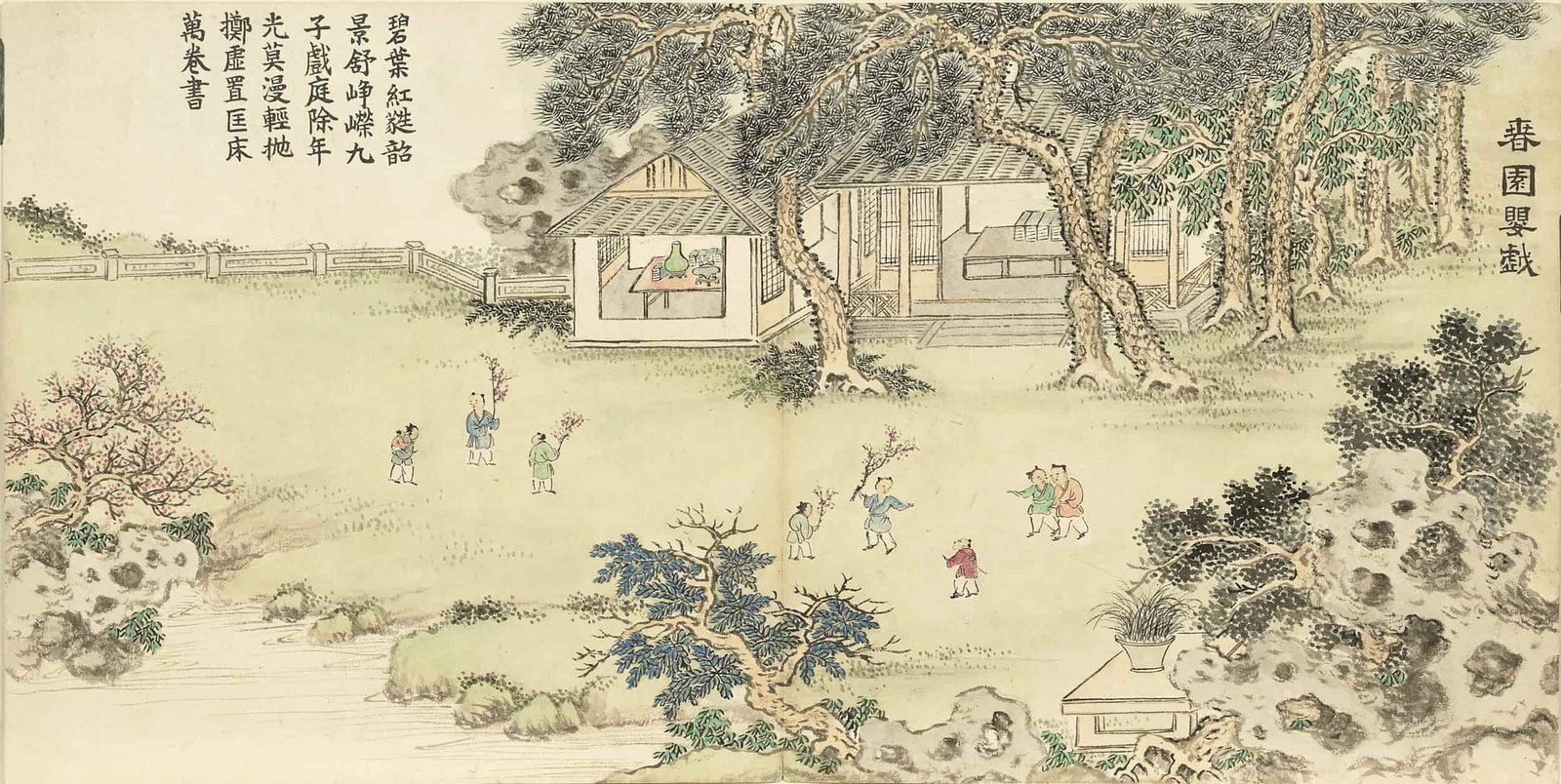
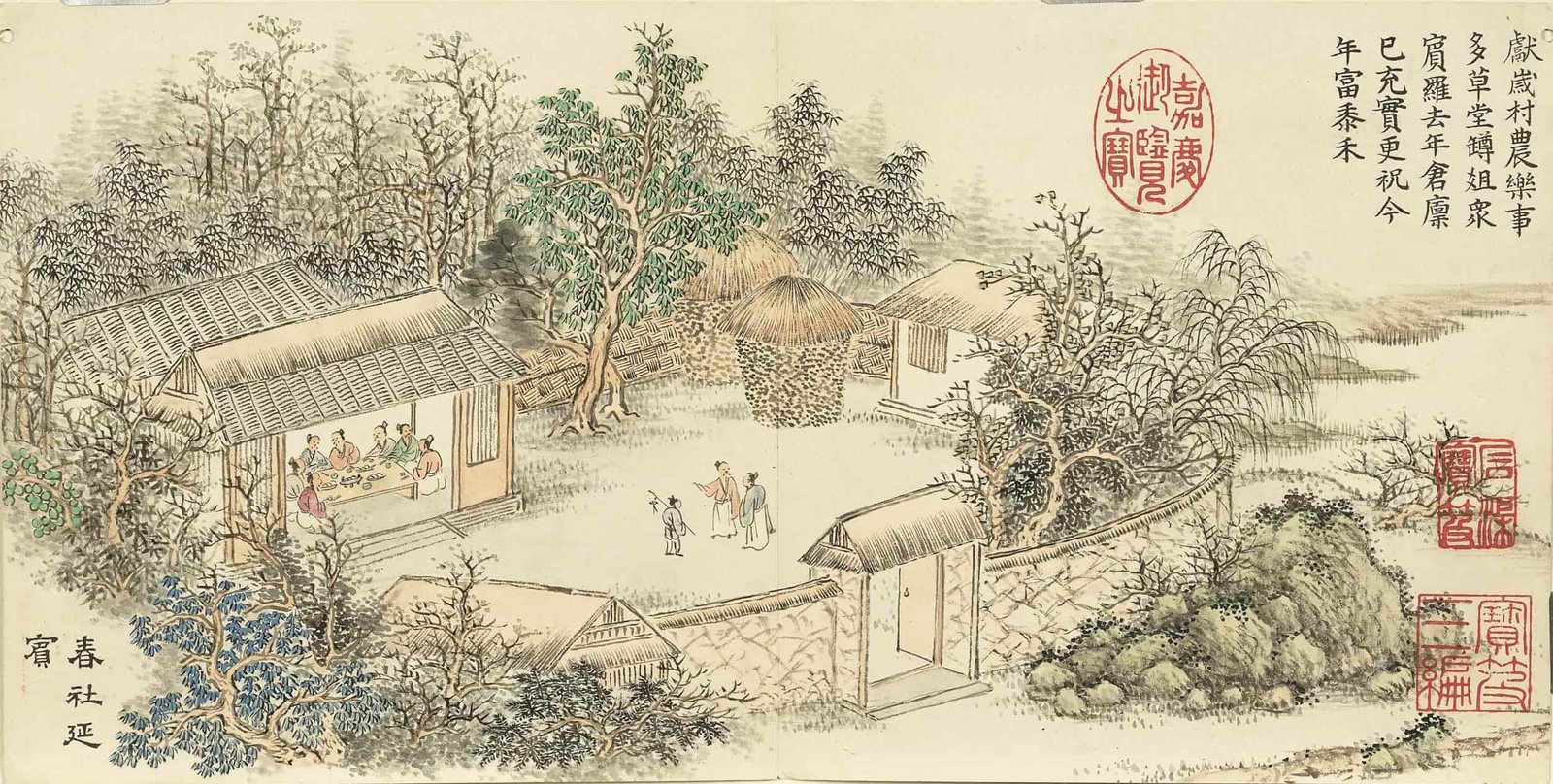
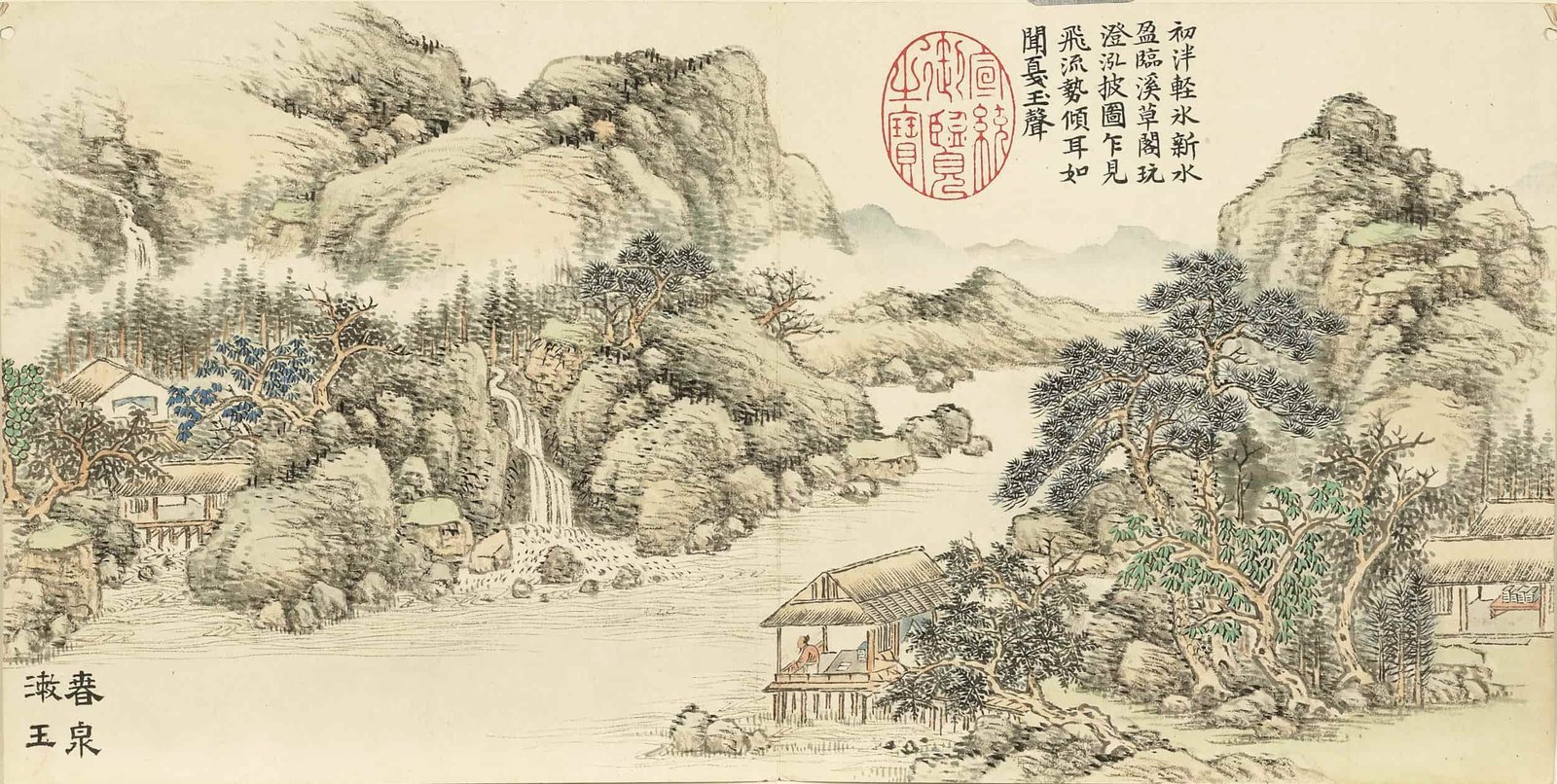
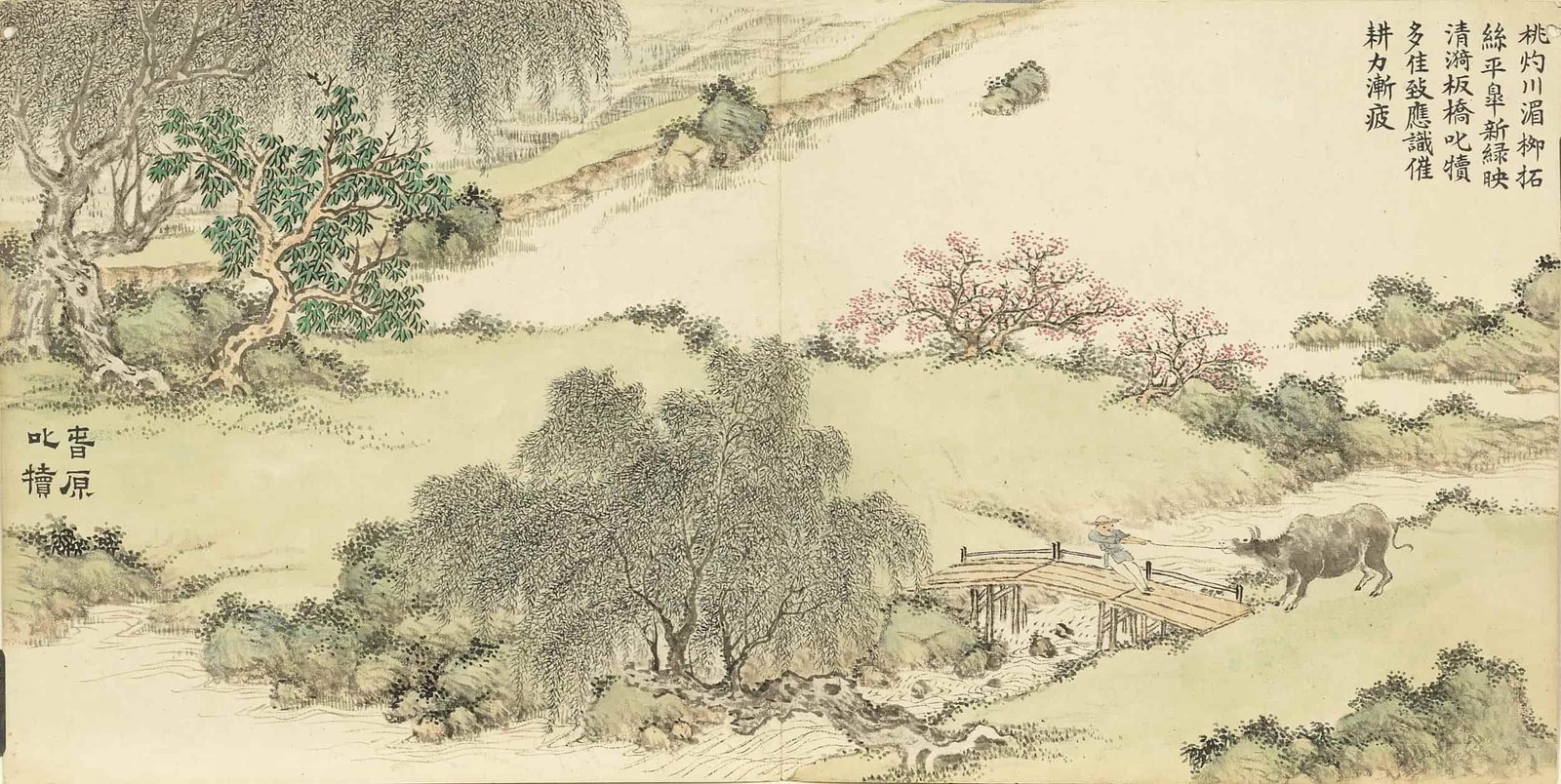
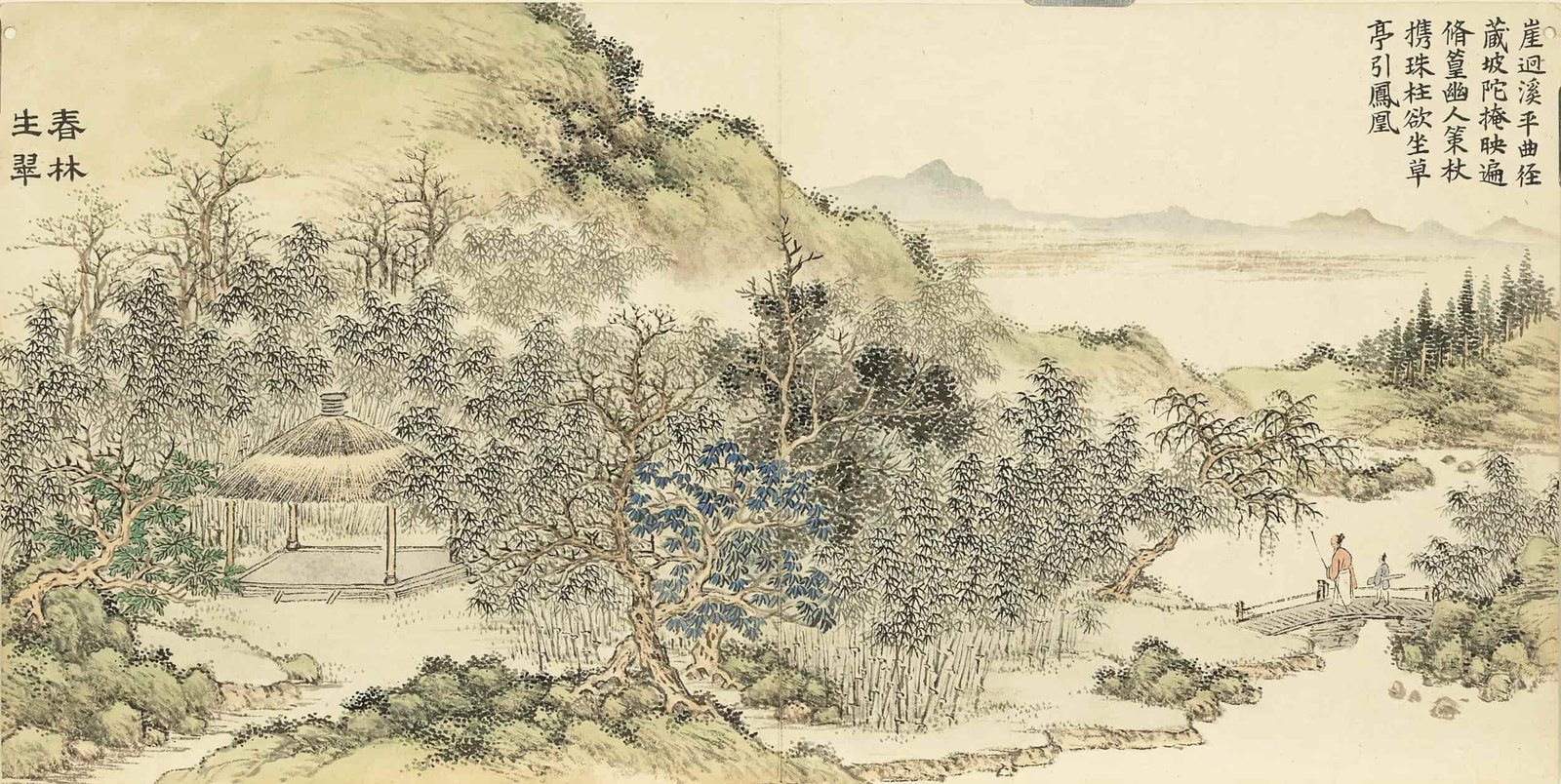
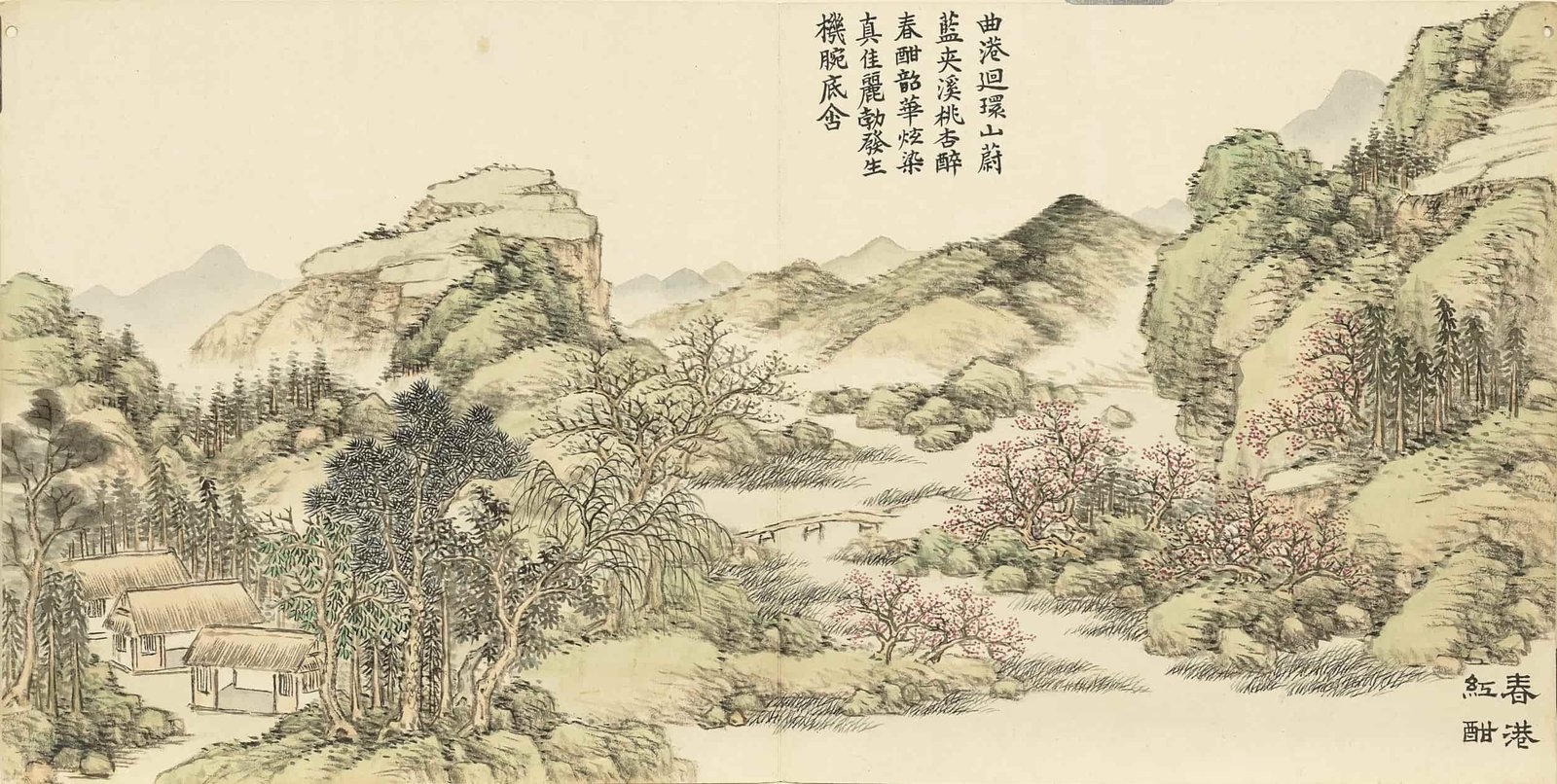
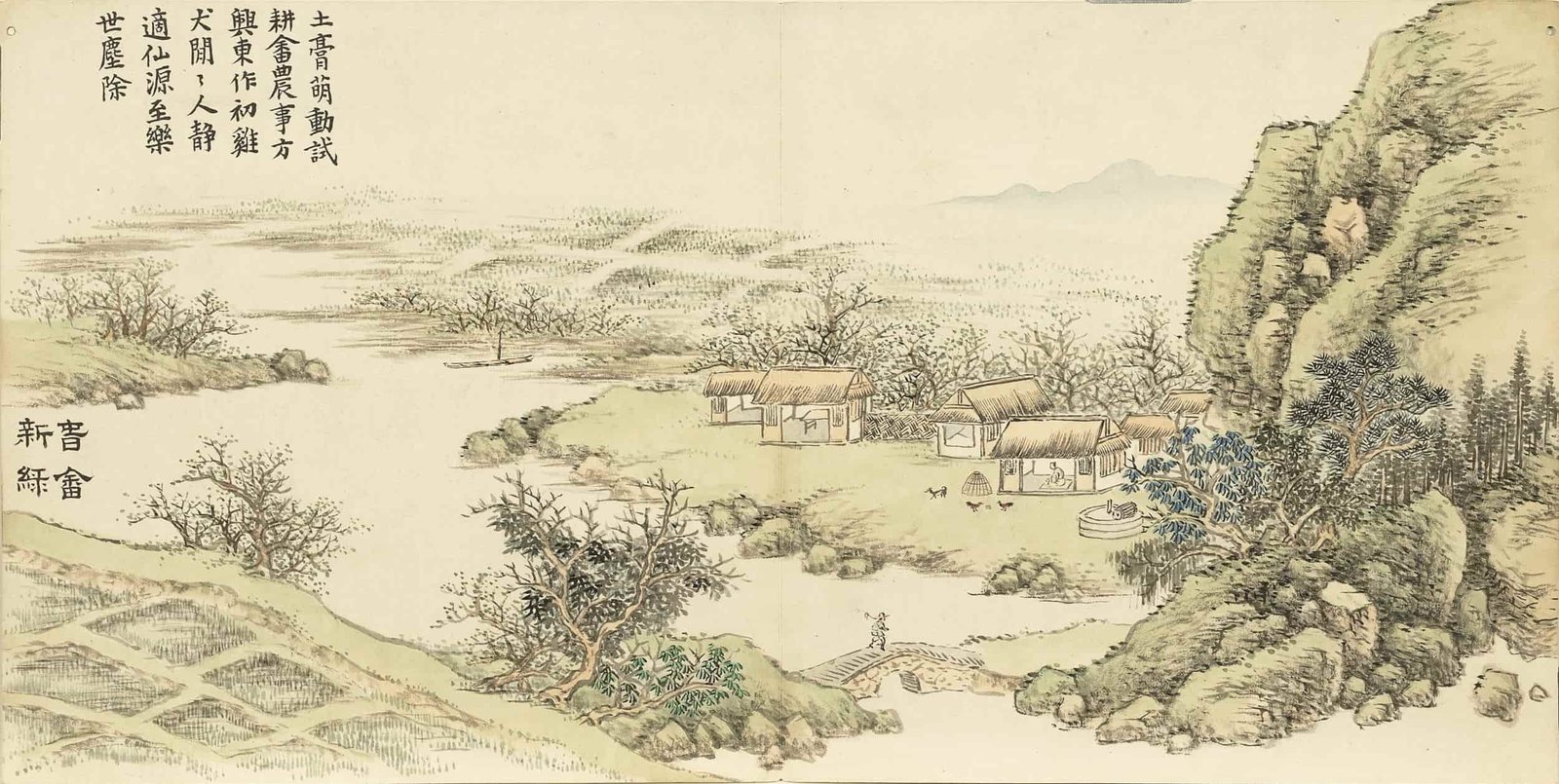
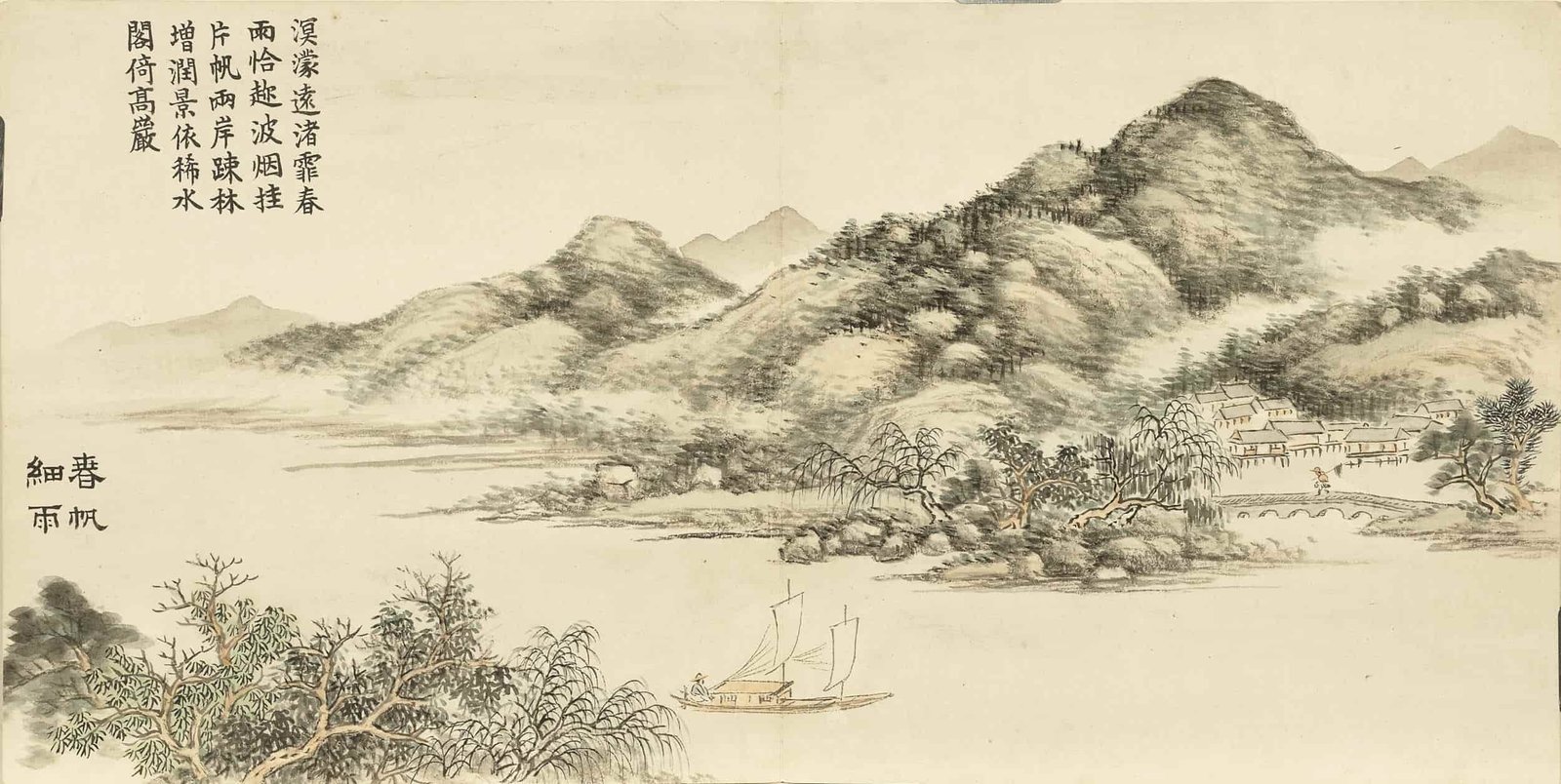
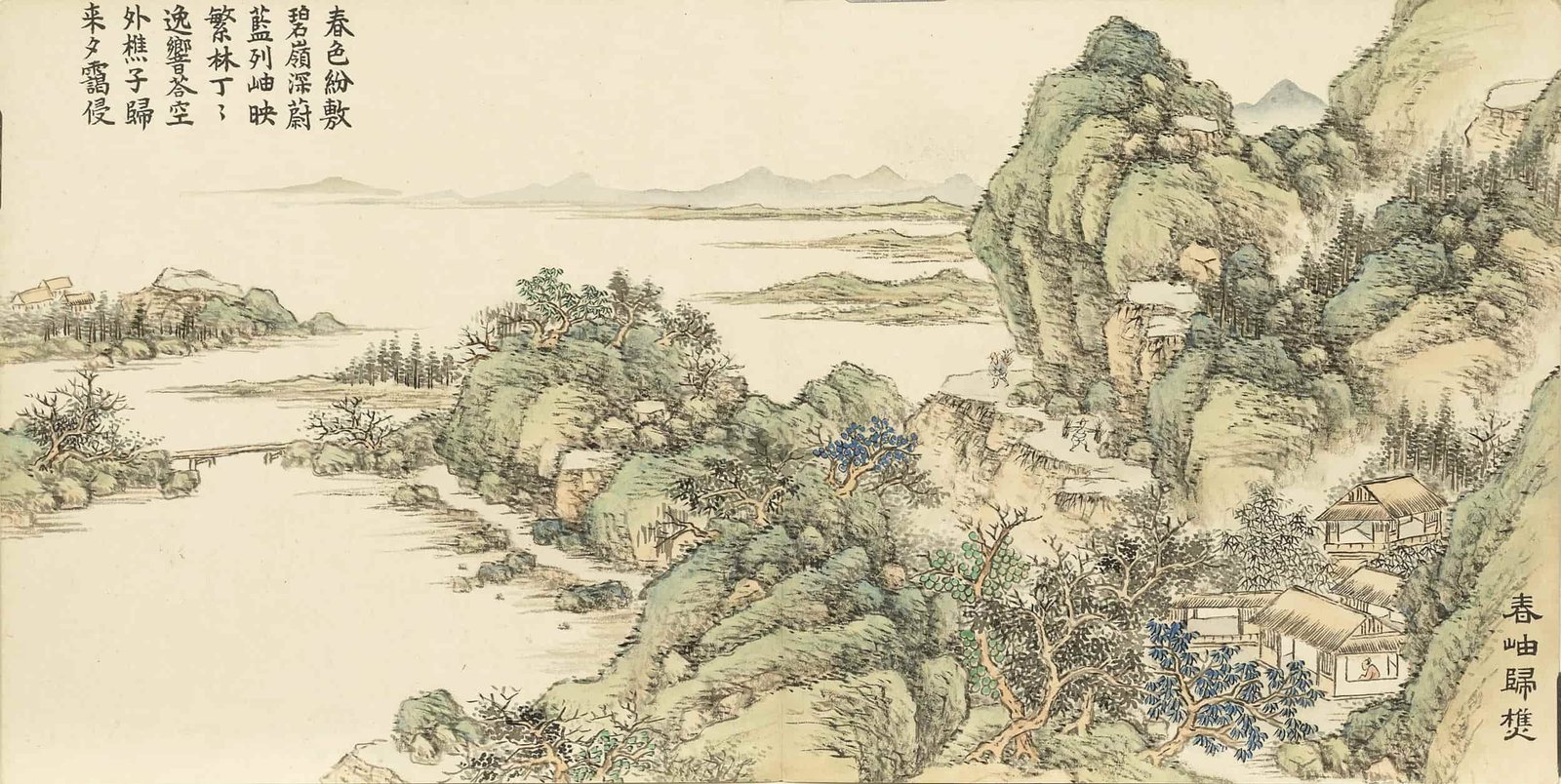

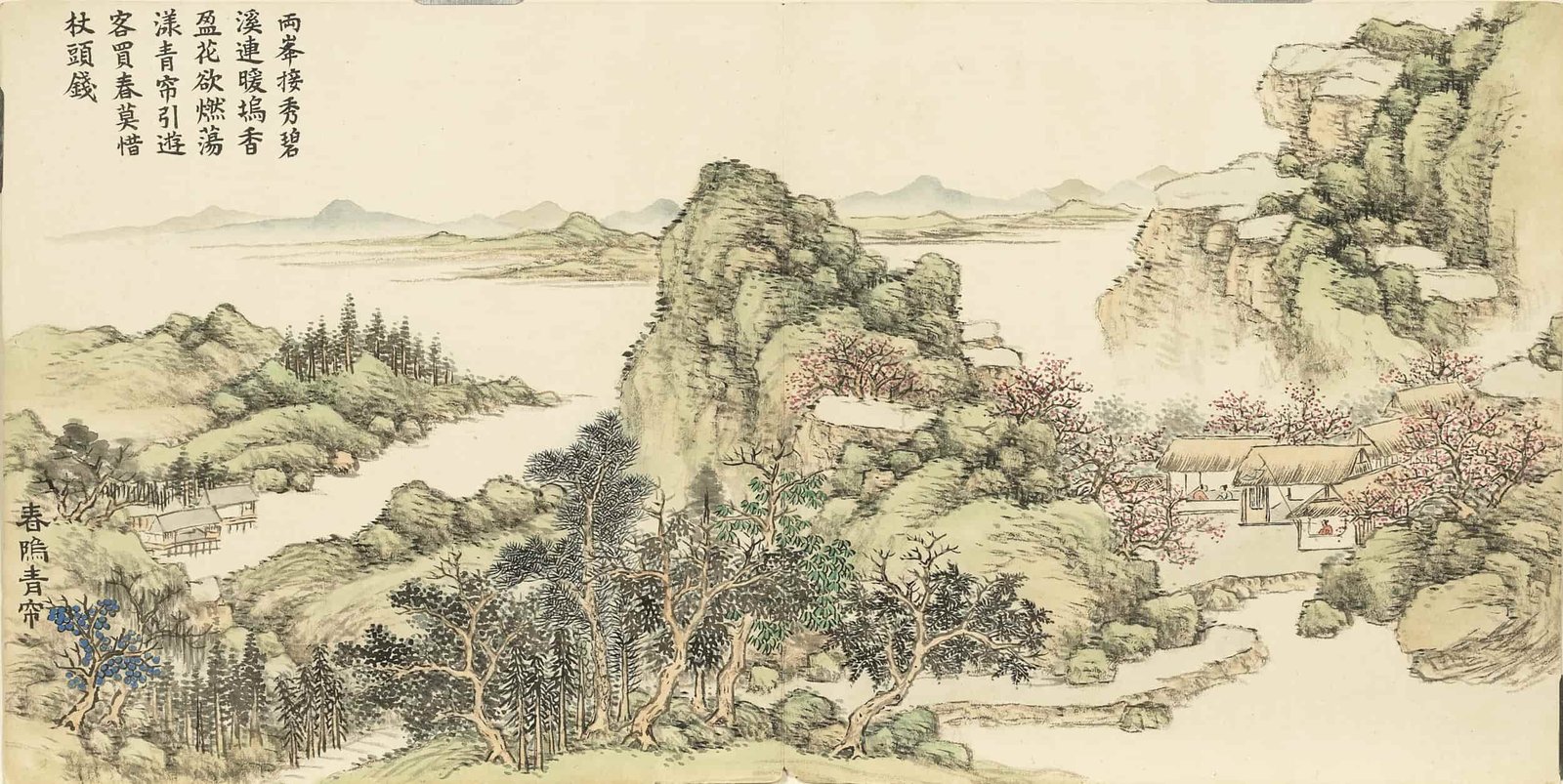
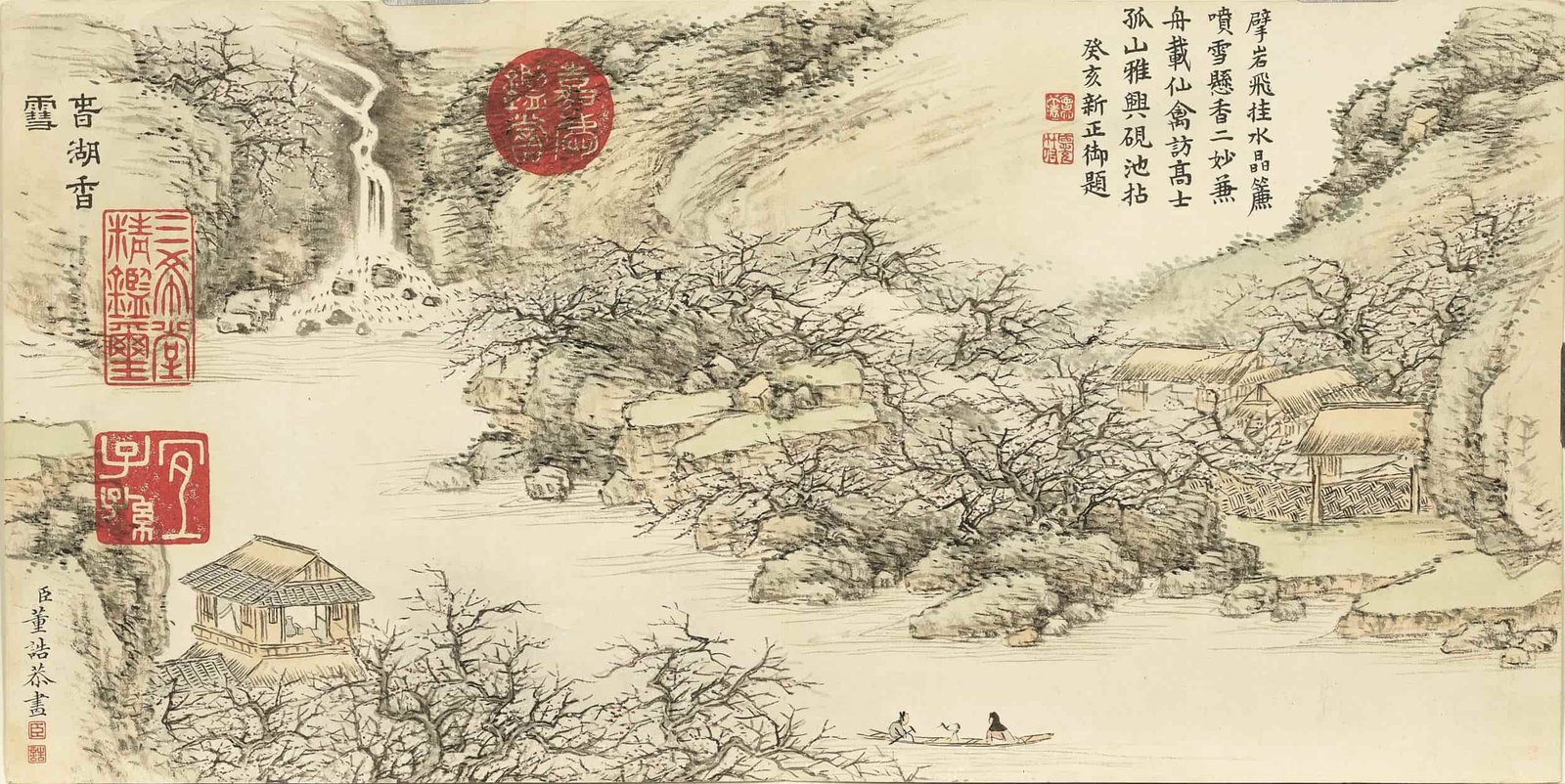
评价
目前还没有评价